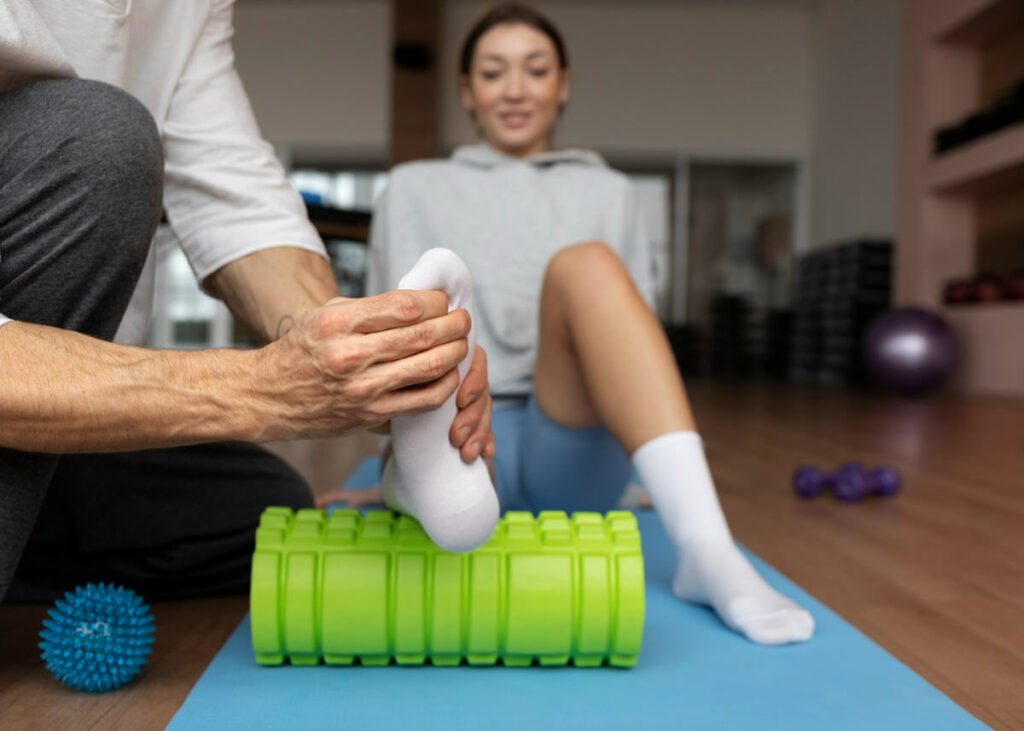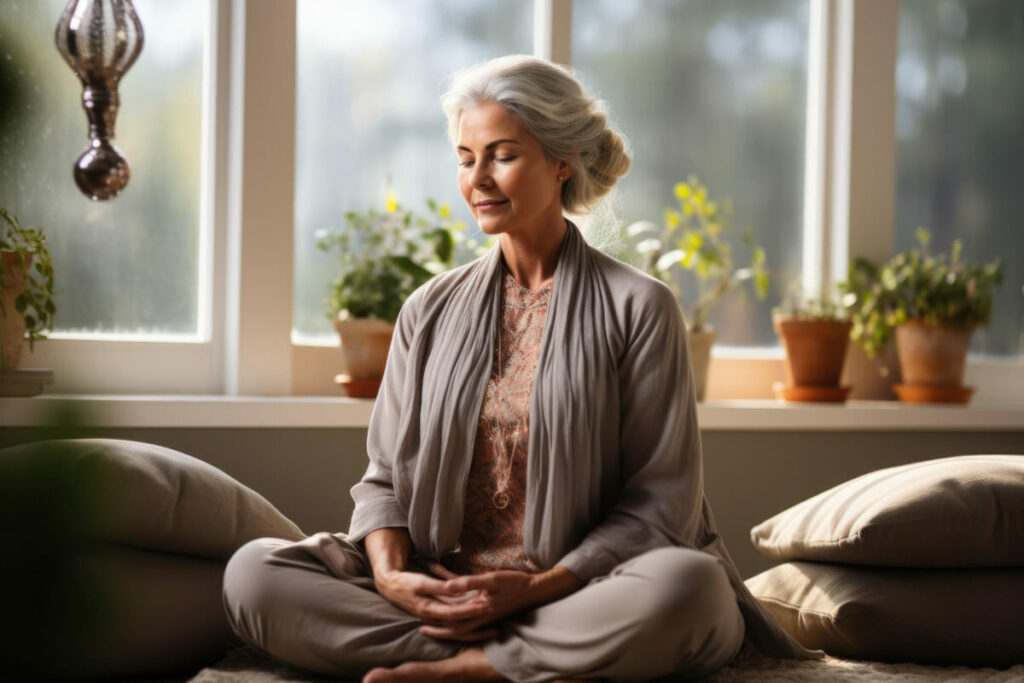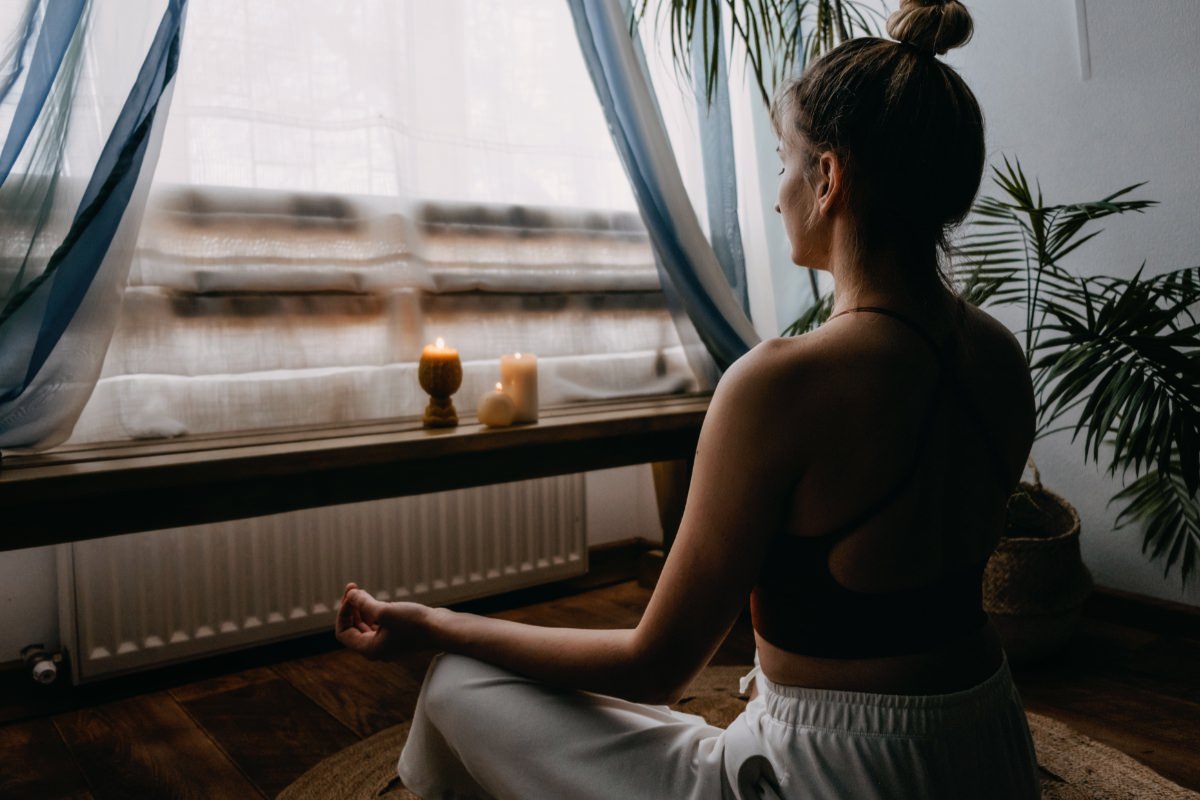Grounding exercises help manage anxiety by focusing on the here and now, using simple methods like paying attention to your senses. These exercises are easy to do anywhere, don’t require special tools, and work for everyone, including kids. They’re safe, with no side effects, and if done regularly, can really help with anxiety. Breathing exercises are a key part, and you can do them without anyone noticing, even at work or in public places.
According to statistics from the National Institute of Mental Health (NIMH), 31.1% of adults in the US experience an anxiety disorder.
In another recent data from the World Health Organization (WHO), it is seen that about 4% of the world’s population experience an anxiety disorder.
These and many more show that anxiety is commonplace in today’s world. It’s a slow pandemic that poses a risk to the lives of millions of people. This risk has made the need for anxiety management strategies and coping mechanisms an important discourse in the global health sector.
Grounding exercises have been proven to be one of the effective tools for managing anxiety. You can learn about ground exercises and how people living with anxiety can integrate them into their daily lives.
What are grounding exercises?
Grounding exercises are techniques designed to redirect one’s focus from overwhelming thoughts and emotions to the immediate and tangible aspects of one’s surroundings with the aim of promoting a sense of presence and stability.
Grounding exercises serve as mental reset buttons, offering a variety of techniques to redirect attention from persistent thoughts and reengage with the present moment by immersing oneself in the surrounding environment. They effectively detach individuals from excessive rumination.
Over the years, grounding exercises have served as practical tools for managing anxiety. It gives individuals struggling with anxiety an effective means to disconnect themselves from anxiety triggers and connect more with their immediate surroundings.
Grounding exercises usually involve engaging the five senses—sight, sound, touch, taste, and smell.
They’re designed to create a sensory experience that challenges the hold of anxiety.
Why grounding exercises?
As an anxiety management tool, the primary goal of grounding exercises is to cultivate mindfulness and combat anxiety by grounding individuals in the present moment using their immediate environment as a distraction.
In the long run, grounding exercises become a practical strategy for breaking the cycle of anxious thoughts and, in the long run, foster a high sense of control over one’s mental state.
Grounding exercises can be categorized into two main purposes.
- Psychological mechanisms
- Connection to mindfulness
Psychologically, grounding exercises disrupt anxious thoughts by redirecting attention and providing immediate relief.
Connected to mindfulness, they encourage non-judgmental observation and hence foster resilience in navigating anxiety triggers with clarity and detachment.
This integration forms a concise approach to managing anxiety and promoting overall well-being.
What are the types of grounding exercises?
There are primarily three types of grounding exercises:
- Sensory grounding
- Physical grounding
- Mindfulness grounding
1. Sensory grounding
Sensory grounding basically revolves around engaging the five senses.

It is the deliberate and mindful engagement of the five senses—sight, sound, touch, taste, and smell. Auditory, visual, and tactile grounding are all done with these senses.
Deep breathing is another technique in sensory grounding. Breathing techniques like diaphragmatic breathing, square breathing, and paced breathing promote relaxation and serve as a countermeasure to anxiety-induced shallow breathing.
2. Physical grounding
Physical grounding, like body scan exercises, involves systematically directing attention to different parts of the body. It is a distraction done with the help of strategic body parts.
The ultimate aim of this type of grounding is to release tension and effect a mind-body connection.
Common options for physical grounding include body scans with audio or visual guides or do-it-yourself non-technical scans targeted at reducing anxiety-related tension.
In addition to the above, progressive muscle relaxation can comfortably pass as another reliable form of physical grounding. It involved intentional tensing and relaxing of muscle groups.
Like in other forms of physical grounding, the primary goal is to induce self-control through muscle relaxation.
3. Mindfulness grounding
This type of grounding has a lot to do with the mind. It includes meditation and guided imagery. Since it has more to do with the mind, it fosters a focused and calm state of mind. Yoga is a common example of mindfulness grounding.

Techniques like focused meditation and guided imagery offer unique paths to mental clarity.
Yoga, for instance, combines physical postures and mindfulness and aligns them with grounding principles. Ultimately, this promotes full engagement and present-mindedness.
How do you make grounding exercises part of your daily life as a person battling anxiety?
First things first, you must understand what anxiety is and the danger it poses to your health as a person.
Moving forward, the next step is to integrate these practices seamlessly into not just your anxiety management techniques but your daily routine.
It is highly recommended that you consider lifestyle changes. Whether your daily routine is guided by a to-do or other means of accountability, it is necessary for you to integrate exercise into your routine.
Set out a specific time to engage in some grounding exercises and learn to stay through to it.
For passive everyday situations, stick to mindfulness grounding exercises that would not fetch you too much attention, especially when done in public.
Consider breath awareness and make it a part of your daily routine.
Whether at the train station, at your desk while working, or at the dining table having dinner, just strive to make these exercises part of your life.
FAQs
Is it better to practice grounding exercises alone or in combination with other anxiety management strategies?
Ground exercises are, no doubt, effective in managing anxiety.
So, sticking to them as the only alternative to managing anxiety is not much of a horrible decision. However, professionals believe that they can be more effective when combined with other anxiety management strategies.
How long will it take me to see results if I begin to practice grounding exercises?
Medically speaking, there is no timeline for the effectiveness of grounding exercises.
This is because consistency and preferences differ per individual. However, individuals will definitely get results if they remain consistent in their integrating grounding exercises into their everyday lives.
Are there grounding exercises that can be practiced in public or professional settings?
A typical deep breathing exercise can not be noticed in public places. This makes it, another non-noticeable grounding exercise, easier to perform in professional settings.
Can children or adolescents benefit from grounding exercises for anxiety?
Like in adults, grounding exercises can be specially designed for children and teens. They are made simple and easily navigable.
What are the side effects of grounding exercises?
Especially when done as instructed by qualified professionals, grounding exercises had zero side effects. Instead, they play a pivotal role in helping individuals manage anxiety effectively.
References
- https://www.healthline.com/health/grounding-techniques
- https://caps.arizona.edu/grounding
- https://www.verywellmind.com/grounding-exercises-425376
- https://www.choosingtherapy.com/grounding-techniques/
- https://eocinstitute.org/meditation/the-ultimate-guide-to-grit-mental-toughness/?mind_power&gad_source=1&gclid=CjwKCAiAvdCrBhBREiwAX6-6UjEPsfKAvFroEJzkMAD83DWcNdiB2SaYim8u6aJeM35VWH0rpfw4axoC504QAvD_BwE
- https://www.verywellhealth.com/grounding-7494652
- https://drsarahallen.com/7-ways-to-calm/
- https://www.innermelbpsychology.com.au/grounding-exercises/
- https://www.insider.com/guides/health/mental-health/grounding-exercises


